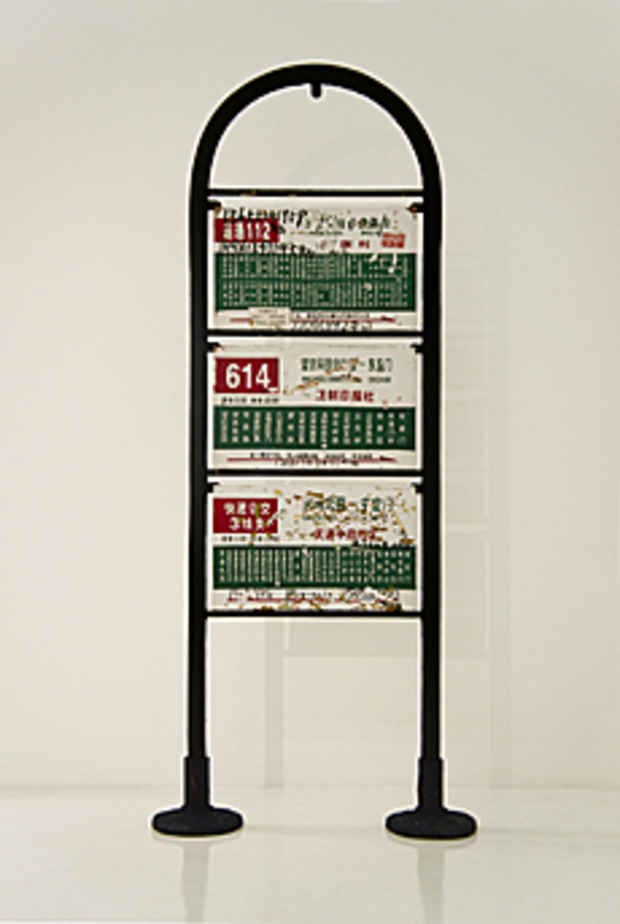"Material → Object" Exhibition
Klein Sun Gallery

This event has ended.
The artists work with various media such as paper, cloth, wood, and leather, and employ techniques that allow them to explore the possibilities of their craft and to give traditional handicrafts a new level of artistic value.
Rediscovering neglected objects, questioning reverence for history and tradition, and contesting society’s restrictions on thinking, Material → Object examines Chinese societal issues through the reconceptualization of chosen techniques. Although they start from individual points of investigation, remembrance, and self-expression, the artists all use their unique process to reimagine contemporary China.
Gao Rong’s work updates the conventional function of embroidery and uses it as an instrument for memory preservation. Weaving together cloth, sponge, and iron creates a juxtaposition of fragility and endurance. She infuses her embroidered pieces with meticulous details that scaffold the conceptual foundation of her work. Gao Rong uses visually delicate materials to produce signs of rust and wear, revealing her feelings of nostalgia towards neglected objects and addressing the anthropomorphic nature of memories.
Li Hongbo explores the adaptability of his medium by playing with the concept of the children’s toy called ‘paper gourd’. This toy is made from a stack of interconnected sheets of thin paper that can be stretched to form new shapes. Li Hongbo’s paper figures challenge the human form. Resembling human bodies, they rebuild the idea of what the human form can look like. The flexibility of these sculptures allows for a hyper-extension of the limbs, creating abstraction from realism. These elongated limbs, which have the ability to tumble out from the figure’s barely distinguishable core, allow us to find a new, playful and anomalous aesthetic.
Similarly, Li Hongjun works with thinly cut sheets of paper to compose his anthropomorphic sculptures. These surreal renderings of human heads use compression and distortion to comment on the deforming influence culture imposes on the minds of the public which can threaten creativity, originality, and the yearn for expression. Li Hongjun’s appreciation for this medium stems from his experience with folk art paper-cutting, and his view that paper brings the truest representation of any subject. Through consideration of the practical object and renegotiation of space, the artist explores human emotion, self-identification, and ideology.
In Wang Liwei’s pieces, the suppleness of the material and irregular composition of figures depict fluidity of the human form. Through the use of leather, Wang Liwei infuses tactility and mutability. The subtle renderings of emotional gesture lead the viewer to reimagine the relationship between what is felt and what is expressed.
Material → Object also includes work by Wang Lei who employs xuanzhi, a high-quality rice paper utilized for traditional Chinese calligraphy and brush painting. The paper is twisted into long, delicate threads that are then woven into reproductions of Chinese imperial robes. The manipulation of this tough-textured paper into the composition of such an exquisite style of garment highlights the problems surrounding the relationship between viewer perception and reality. Wang Lei also draws attention to the often-disputed interconnectedness of traditional and contemporary art, focusing on the reverence for history and tradition as a central obstacle which hinders the acceptance of contemporary art in China.
Ye Sen’s works are sculptures of visual trickery at its best. Interconnecting and descending wooden chains have been carefully carved to resemble metal, forcing viewers to reexamine their own perception of the work. As much as Ye Sen’s experimentation with material causes the observer to reconsider the true composition of the work, the conceptual basis for his art similarly allows for multiple interpretations. While the chains can be read as literal critiques of the restrictions imposed by society on the individual, they can also be viewed as an embodiment of connectivity, symbolizing the relatedness of individuals.
Media
Schedule
from May 29, 2012 to July 19, 2012
Opening Reception on 2012-05-29 from 18:00 to 21:00
Artist(s)
Gao Rong, Li Hongbo, Li Hongjun, Wang Liwei, Wang Lei, Ye Sen